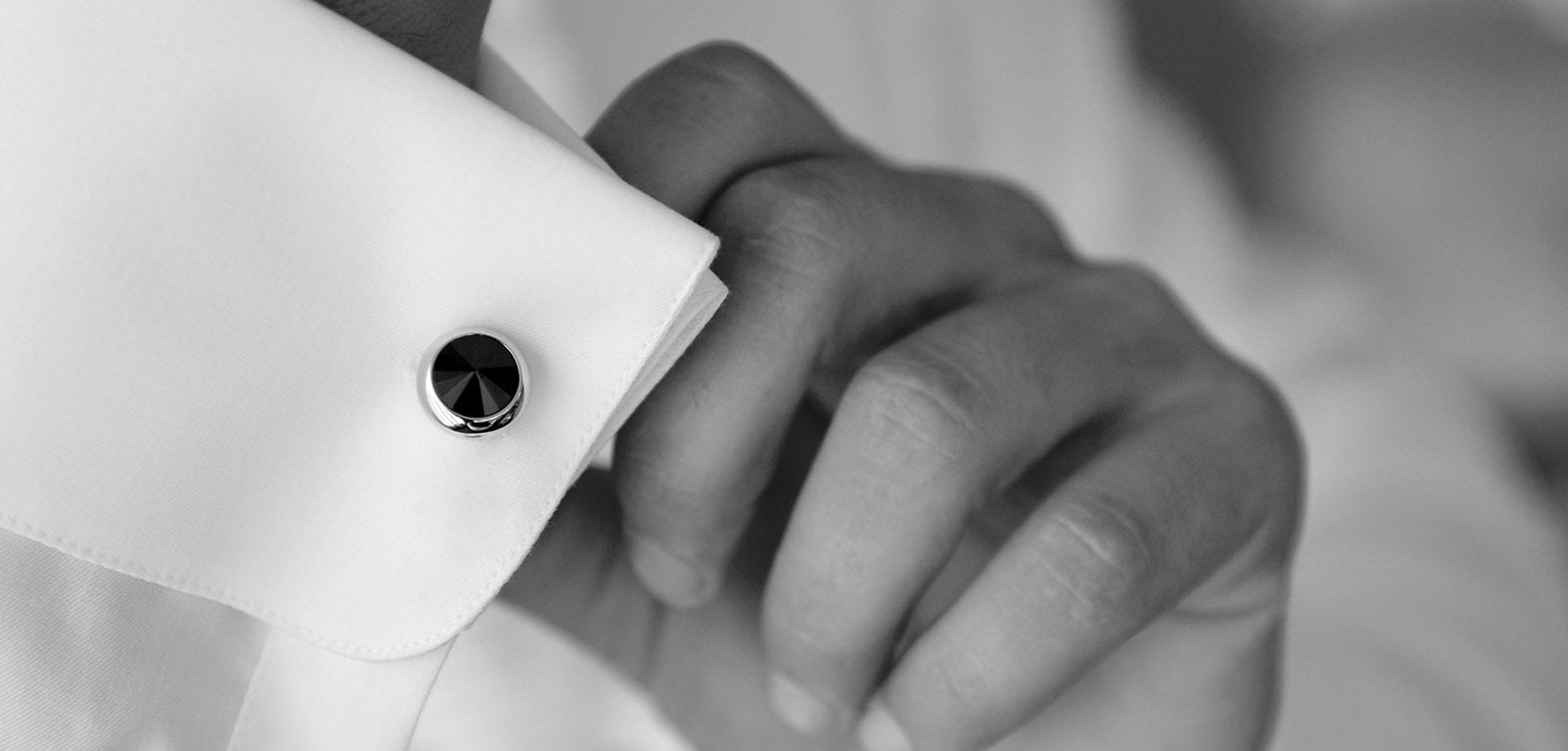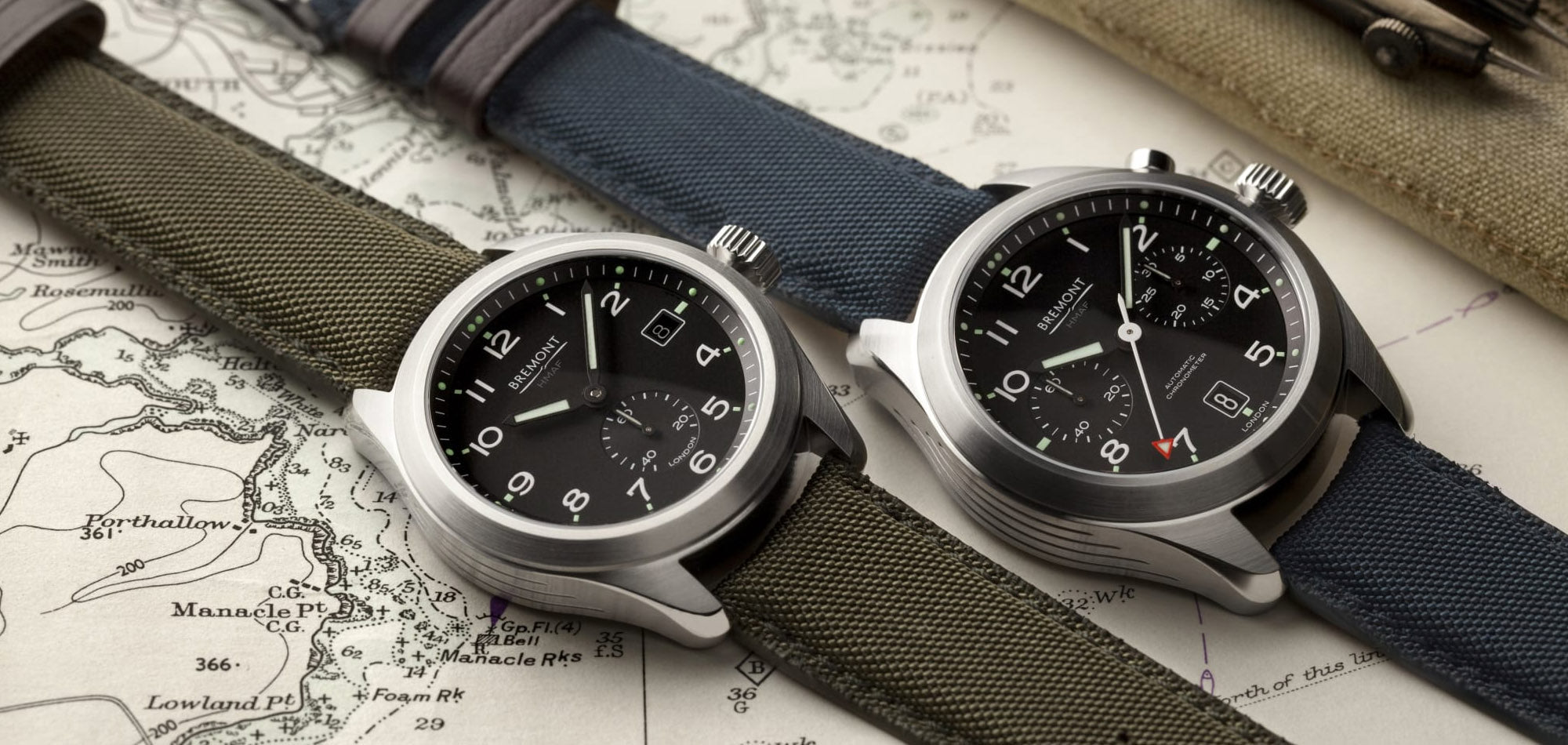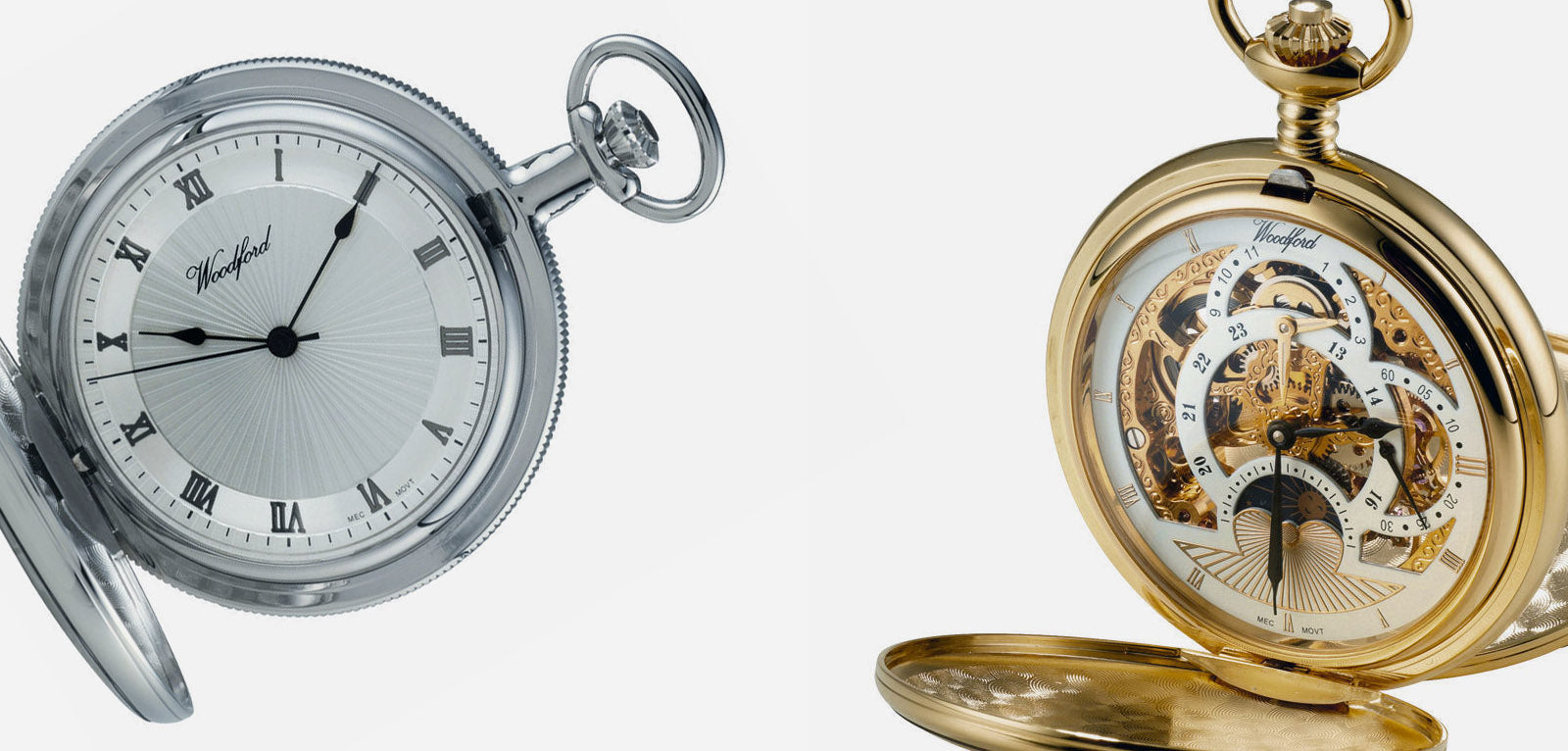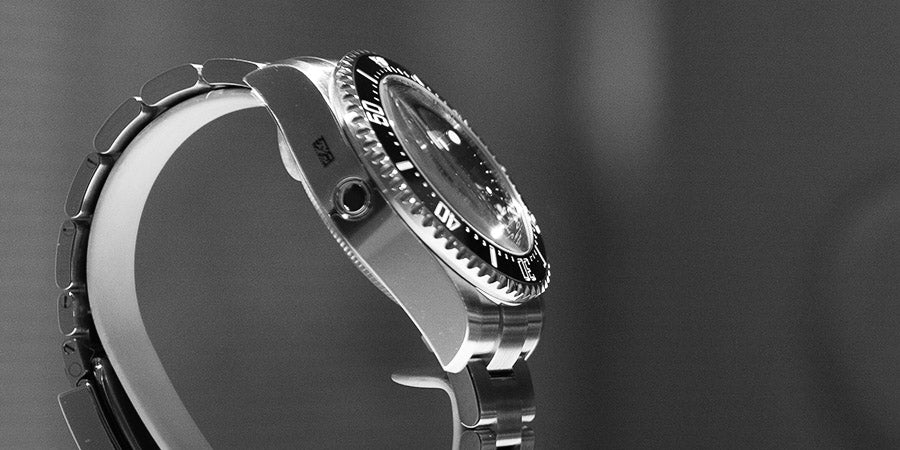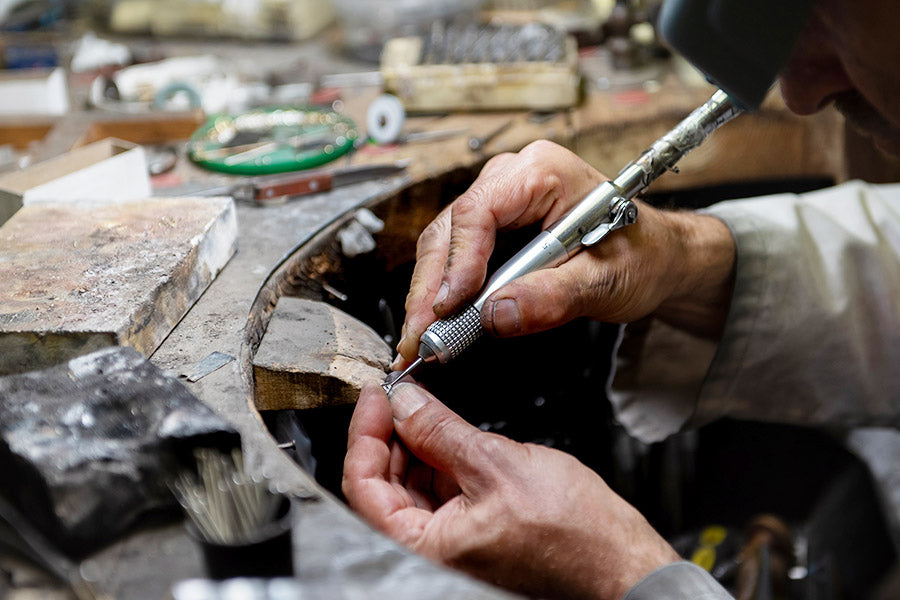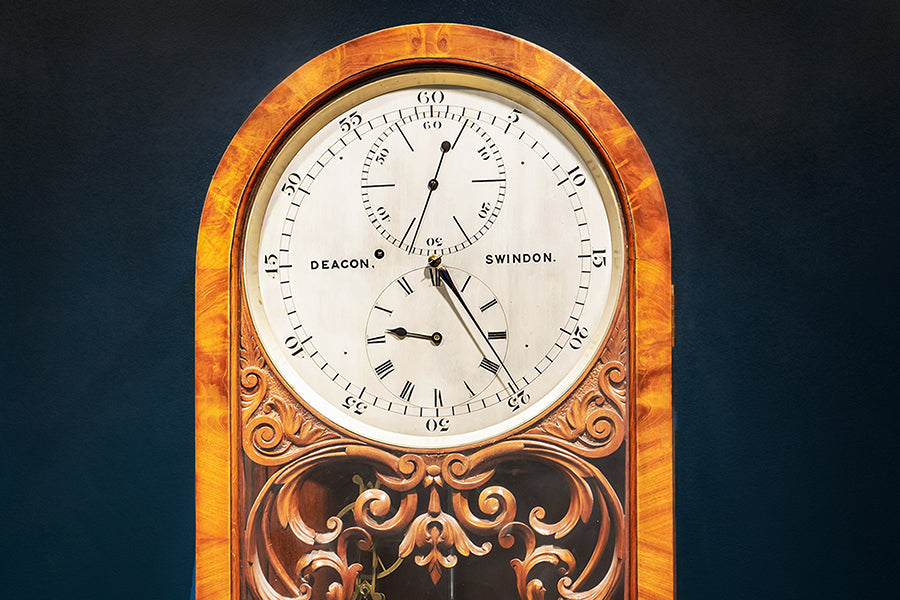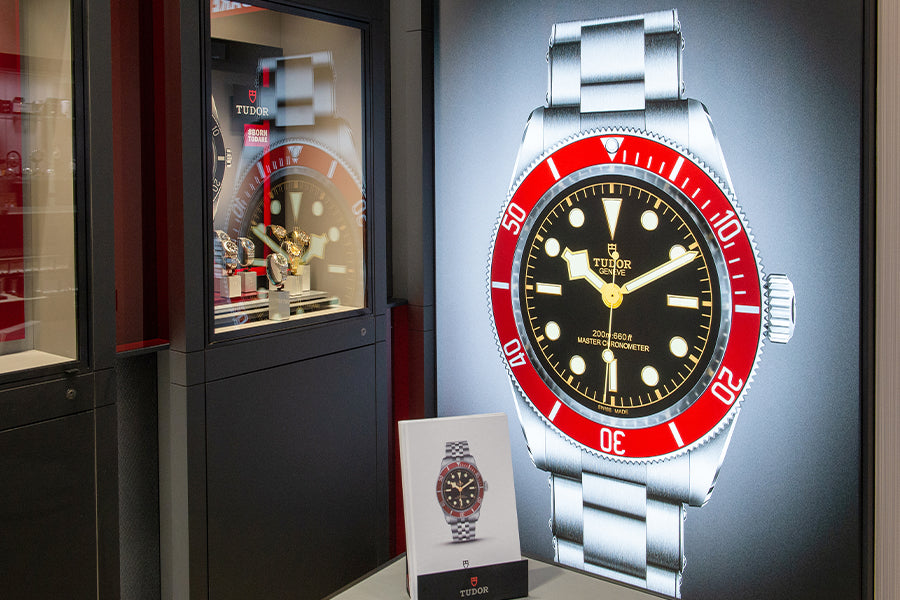When exploring the world of watches, one encounters a diverse array of timekeeping mechanisms known as watch movements. These movements lie at the heart of every timepiece, they are responsible for the precise measurement and display of time. Understanding the different types of watch movements is essential for both enthusiasts and newcomers alike. From the classic mechanical movements that showcase intricate craftsmanship, to the accurate and reliable quartz movement driven by battery technology, and the innovative hybrid movements that blend traditional and contemporary elements, each watch movement offers its own unique characteristics and merits. This guide will provide an informative overview of the various types of watch movements, shedding light on their functionalities, features and the distinctive experiences they offer to wearers. Whether you seek the charm of tradition or the convenience of modernity, the world of watch movements has something to captivate every horological enthusiast.
Watch Movement Types
Within the realm of luxury watchmaking, three distinguished types of watch movements reign supreme, each showcasing its own unique blend of artistry and technical prowess.
First, we encounter the manual-wind mechanical movement, a testament to traditional craftsmanship and the epitome of watchmaking heritage. Painstakingly assembled by skilled artisans, these intricate mechanisms rely on a delicate interplay of gears, springs, and jewels to power the timepiece. Every tick of the second hand, every smooth sweep of the hour hand, emanates from the measured rotation of these meticulously calibrated components. Manual-wind movements embody timelessness and capture the essence of watchmaking's rich history while serving as a testament to the beauty of human ingenuity.
In contrast, the quartz movement stands as a testament to modern innovation and precision engineering. Born from the advent of electronic technology, these movements harness the oscillations of a quartz crystal to maintain exceptional accuracy. Through the marriage of battery power and electronic circuitry, the quartz movement pulses with a near-perfect rhythm, rendering precise timekeeping that captivates the pragmatist's heart. Embracing efficiency and reliability, quartz movements have become synonymous with practicality and accessibility, revolutionising the world of watches with their unrivalled accuracy.
Lastly, we can captivate the world of automatic movements where mechanical ingenuity meets the convenience of self-winding technology. Designed for the connoisseur who appreciates the seamless balance of craftsmanship and convenience, these movements harness the natural motion of the wearer's wrist to power the timepiece. The the bi-directional swing of the oscillating weight gracefully winds the mainspring, instantly translating motion into energy. Automatic movements embody a harmonious marriage of tradition and modernity, offering a unique blend of mechanical artistry and practical functionality.
From the traditional charm of mechanical movements to the precision of quartz and the captivating allure of automatics, each watch movement weaves has its own charm and leaves an indelible mark on the world of luxury horology.

Automatic Watch Movements
Automatic watch movements, also known as self-winding movements, is a fascinating journey that intertwines innovation, convenience, and the quest for perpetual timekeeping.
The concept of automatic movements can be traced back to the late 18th century when Abraham-Louis Perrelet, a Swiss watchmaker, invented the self-winding mechanism. Perrelet's invention utilised a rotor or oscillating weight that would rotate with the movement of the wearer's wrist. This motion transferred energy to the mainspring, effectively winding the watch automatically without the need for manual winding.
However, it was not until the early 20th century that the first commercially successful automatic movements emerged. In 1923, Swiss watchmaker John Harwood patented a practical self-winding system that utilised a centrally mounted rotor, which could rotate freely in both directions. Harwood's design incorporated a mechanism that allowed the rotor to wind the mainspring as it swung back and forth with the wearer's arm movements.
The subsequent decades witnessed advancements and refinements in automatic watch technology. In 1931, Rolex introduced the Perpetual rotor system, developed by their watchmaking genius, Hans Wilsdorf. This groundbreaking invention utilised a unidirectional rotor that could wind the mainspring in a single direction, offering greater efficiency and reliability. Rolex's Perpetual rotor system laid the foundation for the modern automatic movements that are widely used today.
Over the years, watchmakers further enhanced the efficiency and accuracy of automatic movements. They introduced features like bi-directional winding, improved rotor designs, and more precise winding mechanisms. Technological advancements, such as the use of ceramic ball bearings and advanced materials, contributed to reducing friction and enhancing longevity.
Today, automatic watch movements are highly regarded for their convenience and craftsmanship. The self-winding mechanism ensures that the watch remains powered as long as it is worn or subjected to regular motion. Luxury watch brands like Rolex, Omega, and Jaeger-LeCoultre are known for their exceptional automatic movements, showcasing intricate detailing, precision, and reliability.
The history of automatic watch movements reflects the ingenuity of watchmakers throughout the years, who sought to create timepieces that would effortlessly accompany their wearers, offering a seamless blend of function and convenience.
Luxury Watches That Use Automatic Watch Movement

Luxury watch brands have embraced automatic watch movements as a hallmark of their craftsmanship, blending the convenience of self-winding technology with exceptional design and precision. Here are a few notable examples of luxury watches that utilise automatic movements:
TAG Heuer
TAG Heuer's automatic watch range showcases the brand's commitment to precision and performance, with each timepiece in the collection bearing its own distinct collection name. From the iconic TAG Heuer Carrera to the sporty TAG Heuer Aquaracer, these automatic watches epitomize the brand's heritage of motorsport-inspired design and cutting-edge technology. With collection names like the TAG Heuer Monaco, Formula 1, and Autavia, TAG Heuer's automatic watch range offers a diverse selection of styles and functionalities, while consistently delivering exceptional craftsmanship and the reliable accuracy of automatic movements.
TUDOR
TUDOR combines Swiss craftsmanship with a sense of heritage and adventure, featuring an array of timepieces with their own distinct collection names. From the iconic TUDOR Black Bay to the versatile TUDOR Pelagos, each watch in the collection boasts reliable automatic movements that deliver precision and accuracy. With collection names like the TUDOR Heritage, Glamour, and Ranger, TUDOR's automatic watch range offers a diverse selection of styles and functionalities, catering to the tastes of watch enthusiasts who appreciate craftsmanship, reliability, and the spirit of exploration.
Seiko
Seiko exemplifies the brand's commitment to precision and innovation, offering a diverse collection of timepieces with their own unique collection names. From the iconic Seiko Prospex to the elegant Seiko Presage, these automatic watches embody the brand's Japanese craftsmanship and attention to detail. With collection names like the Seiko Astron, Seiko 5 Sports, and Seiko Premier, Seiko's automatic watch range caters to a wide range of styles and preferences, while consistently delivering exceptional performance and the reliability of automatic movements. Whether it's for diving, sports, or formal occasions, Seiko has an automatic watch to suit every lifestyle and taste.
Omega
Omega represents the pinnacle of Swiss watchmaking, featuring an extensive collection of timepieces with their own distinctive collection names. From the iconic Omega Seamaster to the sophisticated Omega Constellation, each watch in the range showcases impeccable craftsmanship and cutting-edge technology. With collection names like the Omega Speedmaster, De Ville, and Aqua Terra, Omega's automatic watch range caters to a variety of styles and functions, from sporty chronographs to elegant dress watches. Renowned for their precision, durability, and timeless design, Omega's automatic watches are the epitome of luxury and performance, making them a coveted choice among watch enthusiasts worldwide.
Patek Philippe
Patek Philippe's automatic watch range represents the epitome of luxury and horological excellence, featuring a prestigious collection of timepieces with their own distinguished collection names. From the timeless elegance of the Patek Philippe Calatrava to the intricate complications of the Patek Philippe Nautilus, each watch exemplifies the brand's commitment to precision, craftsmanship, and heritage. With collection names like the Patek Philippe Aquanaut, Grand Complications, and Golden Ellipse, Patek Philippe's automatic watch range offers a range of styles and complications to suit the discerning tastes of watch connoisseurs. Renowned for their exquisite design, exceptional movements, and limited production, Patek Philippe's automatic watches are treasured heirlooms that embody the pinnacle of Swiss watchmaking mastery.
These luxury watch brands, along with many others, continuously push the boundaries of automatic watch movement technology, blending it seamlessly with artistic design, complications, and meticulous craftsmanship. Each timepiece represents a harmonious union of traditional watchmaking heritage and modern innovation, delivering exceptional timekeeping experiences for discerning watch enthusiasts.
Manual Watch Movement
The history of manual watch movements stretches back centuries, tracing its roots to the origins of mechanical timekeeping. In the early days of horology, during the 14th and 15th centuries, clocks and watches were driven by weights and relied on complex systems of gears and escapements. These early timepieces required manual winding by the wearer to keep them running.
However, it was in the 17th century that the first true portable watches, known as pocket watches, emerged. These timepieces featured smaller, more refined movements that could be conveniently carried in a pocket. They were typically powered by a mainspring, a coiled strip of metal that stored energy when wound manually using a key or a crown. As the mainspring gradually unwound, it released energy that regulated the movement of gears and hands, indicating the passage of time.
Manual watch movements underwent significant advancements during the 18th and 19th centuries. Master watchmakers refined the design and construction of these movements, introducing innovations such as lever escapement, which improved accuracy, and the development of jewel bearings to reduce friction and increase durability. These developments allowed for more precise timekeeping and enhanced the reliability of manual watches.
Throughout the 20th century, manual watch movements continued to evolve alongside technological advancements. The introduction of shock-resistant systems, such as the Incabloc and Kif systems, improved the durability of watches, making them more resilient to external impacts and vibrations.
While the advent of automatic and quartz movements in the 20th century offered alternative ways to power watches, manual watch movements have endured as a symbol of traditional watchmaking craftsmanship. Today, they are highly sought after by enthusiasts who appreciate the meticulous hand assembly, the intricate mechanical complexities, and the connection to horological traditions that manual movements embody.
In a world where convenience often takes precedence, manual watch movements stand as a testament to the artistry and dedication of master watchmakers throughout history, preserving the romance and charm of a bygone era of horology.
Luxury Watches That Use Manual-Wind Movements

When it comes to luxury watches that utilise manual watch movements, there are only a few that still make them with the traditional horology. In modern times, more and more watches are using automatic watch movements which makes buying pre-owned watches even more prominent. Here are a few notable examples of luxury watches with manual-wind movements:
Grand Seiko
Grand Seiko showcases the pinnacle of Japanese watchmaking excellence and attention to detail. Each timepiece within this collection bears a unique collection name, such as the Grand Seiko Heritage Collection or the Grand Seiko Elegance Collection. These manual watches exemplify the brand's commitment to precision and craftsmanship, featuring intricate hand-wound movements that uphold the highest standards of accuracy and reliability. With their stunning designs, flawless finishes, and a range of collection names that reflect their distinct characteristics, the Grand Seiko manual watch range offers an unparalleled horological experience for enthusiasts who appreciate the artistry and mastery of manually wound timepieces.
Pre-owned Watches
Pre-owned watches allow for traditional or rare watches to become available to the market again and often at a cheaper price. Purchasing luxury pre-owned manual-wind movement watches represents a fusion of tradition and craftsmanship, as these watches are not only exquisite artefacts but also hold the rich stories of their previous owners. Exquisite manual-wind watches can be found from luxury brands such as Omega, Longines and Bvlgari when buying pre-owned watches.
Get in touch with us to find out what pre-owned luxury manual-wind watches we have in stock.
These luxury watch brands, among others, embrace the art of manual watch movements, ensuring that the horological traditions and the meticulous craftsmanship of these mechanical marvels are cherished in the world of luxury timepieces.
Quartz Watch Movements
The quartz watch movement is a fascinating tale of technological breakthroughs and the transformation of the watch industry. The development of quartz movements revolutionised timekeeping, offering unparalleled accuracy and convenience.
The story begins in the 1920s when the piezoelectric effect was discovered by Jacques and Pierre Curie. This effect demonstrated that certain crystals, such as quartz, generate a small electrical charge when subjected to mechanical stress. However, it took several decades before this discovery was applied to timekeeping.
In the late 1960s, a team of researchers at the Swiss company Centre Electronique Horloger (CEH) led by engineers Max Hetzel and Rene Le Coultre developed the first prototype of a quartz wristwatch movement. The movement utilised a quartz crystal as the primary timekeeping element and an electronic circuit to measure its vibrations. This breakthrough introduced a new level of accuracy that surpassed traditional mechanical movements.
The true turning point came in 1969 when Seiko, a Japanese watch manufacturer, unveiled the Seiko Astron, the world's first commercially available quartz watch. The Astron quartz movement was highly accurate, cost-effective, and required minimal maintenance. This marked the beginning of the Quartz Crisis, a period during the 1970s when the Swiss watch industry faced significant challenges due to the rising popularity of quartz timepieces.
The advent of quartz movements brought several advantages over mechanical counterparts. Quartz watches were more accurate, typically losing or gaining only a few seconds per month, compared to the minutes per day often seen in mechanical movements. They were also more affordable to produce, leading to wider accessibility for consumers
Throughout the following decades, quartz movements became increasingly prevalent in the watch market, dominating the industry in terms of sales volume. They powered a wide range of timepieces, from affordable watches to high-end luxury models.
Despite the initial disruption caused by the Quartz Crisis, the Swiss watch industry adapted and found its niche by focusing on mechanical watchmaking and craftsmanship, catering to enthusiasts who appreciate the artistry and heritage associated with mechanical movements.
Today, quartz watch movements continue to be popular for their accuracy, reliability, and low maintenance requirements. They are widely used in both affordable fashion watches and high-end luxury timepieces, showcasing the ongoing influence of quartz technology in the world of horology.
Luxury Watches That Use A Quartz Watch Movement

While quartz watch movements are often associated with more affordable and mass-produced timepieces, there are luxury watch brands that incorporate quartz movements into their collections, combining the precision of quartz with exquisite craftsmanship and design. Here are a few examples:
Cartier
Cartier's quartz watch range showcases the brand's timeless elegance and exquisite craftsmanship, offering a diverse collection of timepieces with their own distinct collection names. From the iconic Cartier Tank to the sophisticated Cartier Ballon Bleu, each watch in the range combines Swiss precision with Cartier's signature design aesthetic. With collection names like the Cartier Santos, Panthère de Cartier, and Drive de Cartier, Cartier's quartz watch range caters to a variety of styles and preferences, from classic dress watches to bold statement pieces. Known for their refined aesthetics, impeccable quality, and reliable quartz movements, Cartier's quartz watches are a symbol of luxury and sophistication for those seeking elegant timepieces that stand the test of time.
Omega
Omega combines precision and style, offering a diverse collection of timepieces with their own unique collection names. From the iconic Omega Seamaster Aqua Terra to the sporty Omega Speedmaster Racing, each watch in the range showcases Omega's commitment to accuracy and design excellence. With collection names like the Omega Constellation, De Ville, and Seamaster Diver, Omega's quartz watch range caters to various tastes and preferences, from classic elegance to adventurous functionality. Known for their reliable quartz movements, exceptional craftsmanship, and a wide range of designs, Omega's quartz watches provide a perfect blend of reliability and aesthetics for those seeking a high-quality timepiece that is both stylish and precise.
Breitling
Breitling offers a fusion of robustness and precision, featuring a collection of timepieces with their own distinct collection names. From the iconic Breitling Navitimer to the adventurous Breitling Superocean, each watch in the range showcases the brand's commitment to aviation-inspired design and superior functionality. With collection names like the Breitling Chronomat, Avenger, and Colt, Breitling's quartz watch range caters to a variety of styles and purposes, from professional pilots to outdoor enthusiasts. Renowned for their exceptional accuracy, durability, and practicality, Breitling's quartz watches combine cutting-edge technology with a touch of luxury, making them the ideal choice for individuals who value reliability and performance in their timepieces.
Patek Philippe
Patek Philippe is renowned for its exquisite craftsmanship and timeless elegance, and while the brand primarily focuses on mechanical movements, it does offer a limited selection of quartz watches. Patek Philippe's quartz watch range includes a few models with collection names such as the Patek Philippe Twenty~4 and the Patek Philippe Gondolo. These quartz watches are designed to uphold Patek Philippe's commitment to precision and luxury, offering a blend of refined aesthetics and reliable timekeeping. Although the majority of Patek Philippe's collection revolves around mechanical watches, their quartz offerings provide a quartz-driven option for individuals seeking the brand's legendary quality and distinctive style with the convenience of quartz accuracy.
TAG Heuer
From the iconic TAG Heuer Formula 1 to the sleek TAG Heuer Carrera, each watch in the range showcases the brand's commitment to innovation and sporting heritage. With collection names like the TAG Heuer Aquaracer, Monaco, and Link, TAG Heuer's quartz watch range caters to a variety of tastes and lifestyles. Known for their reliable quartz movements, bold designs, and exceptional functionality, TAG Heuer's quartz watches are favoured by sports enthusiasts and watch aficionados alike. Whether it's for timing your next adventure or making a stylish statement, TAG Heuer's quartz watches offer accuracy and style in equal measure.
Grand Seiko
Grand Seiko's luxury quartz watch movements epitomise the pinnacle of precision and craftsmanship in the world of horology. These exquisite timepieces are a testament to the Japanese art of watchmaking, known for its unparalleled attention to detail and innovation, such as the Heritage collection and Elegance collection. Crafted with meticulous care, they offer unmatched reliability, with deviations in timekeeping measured in mere seconds per year. The blend of traditional craftsmanship and cutting-edge technology in these watches ensures that they not only perform at the highest standards but also showcase a timeless elegance and refinement that is the hallmark of Grand Seiko.
Although designer luxury brands offer watches with quartz movements, they are still known for their mechanical movements and the craftsmanship associated with them. Quartz-powered models from these brands often serve as alternatives for those seeking high accuracy, ease of use, and a more accessible entry point into luxury watch ownership.
Luxury Watches At Deacons Jewellers
Deacons Jewellers offer a wide range of luxury watches crafted from the finest materials and assembled with beautiful attention to detail. Every component is designed, developed and produced to the most exacting standards.





